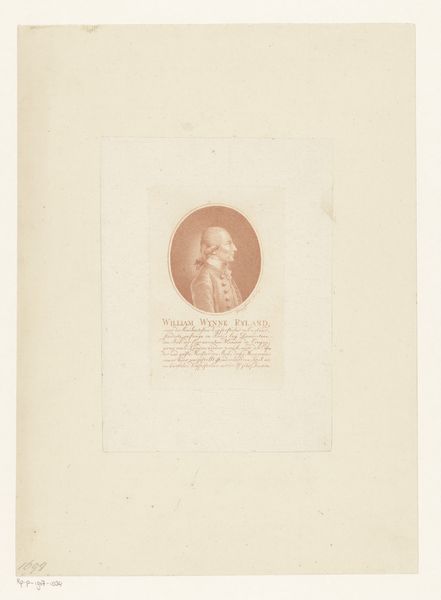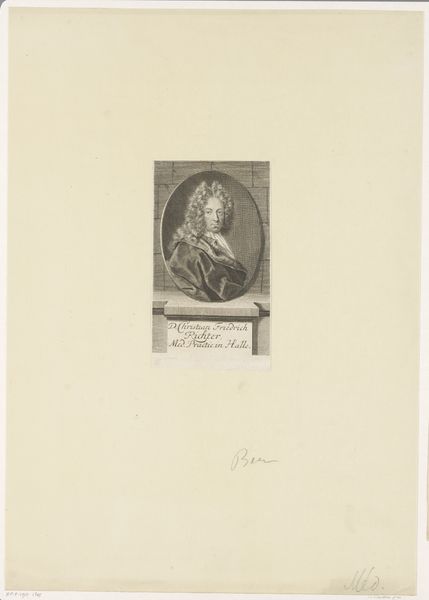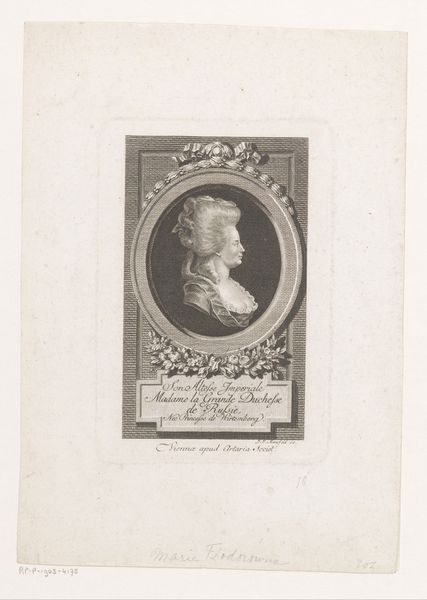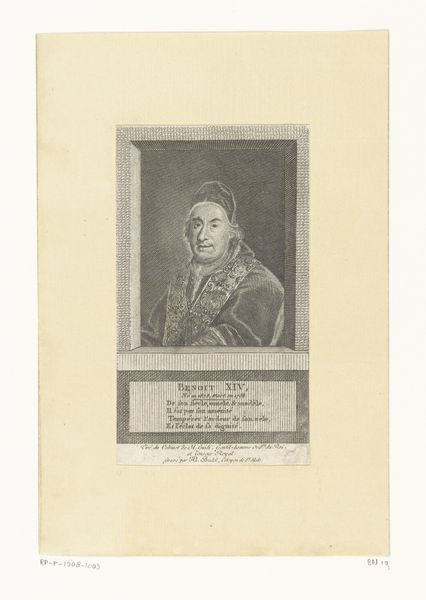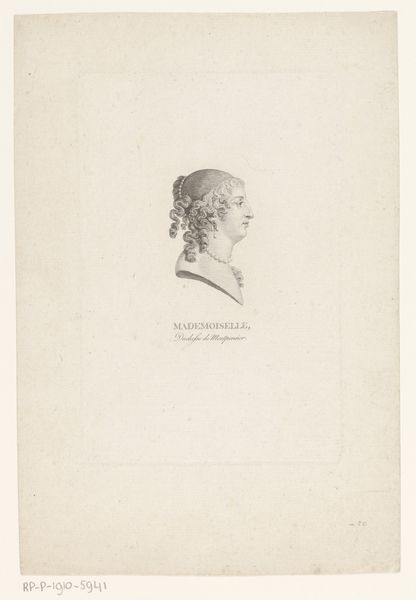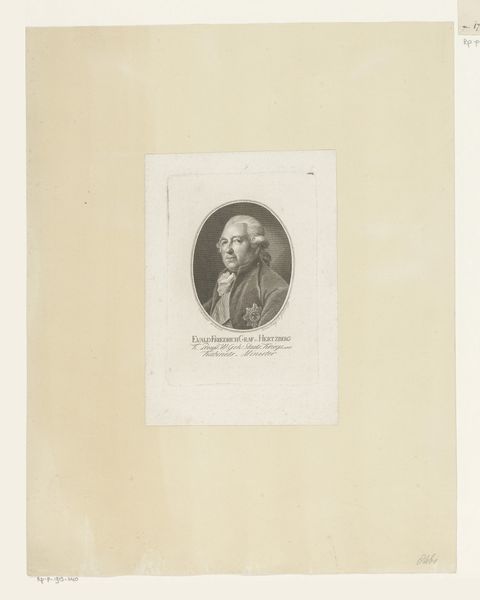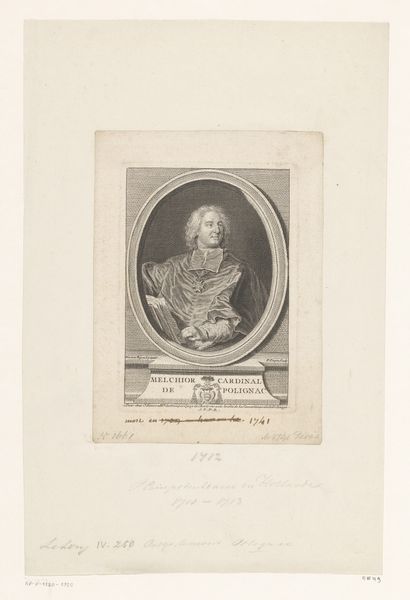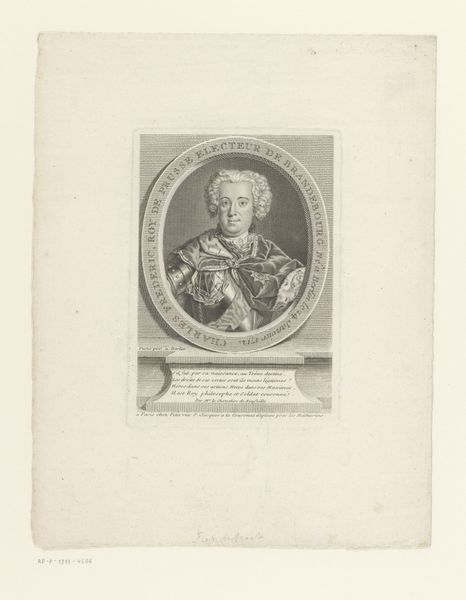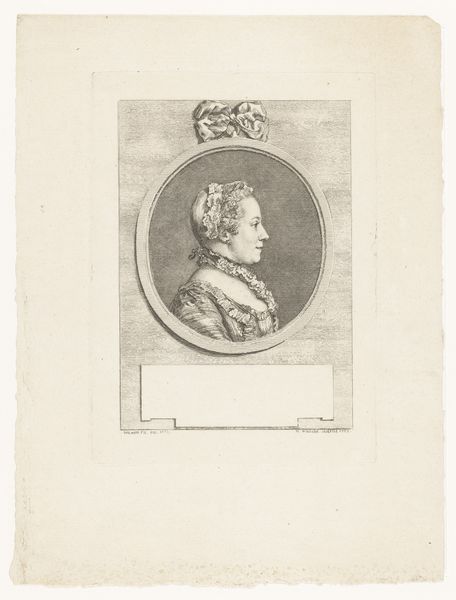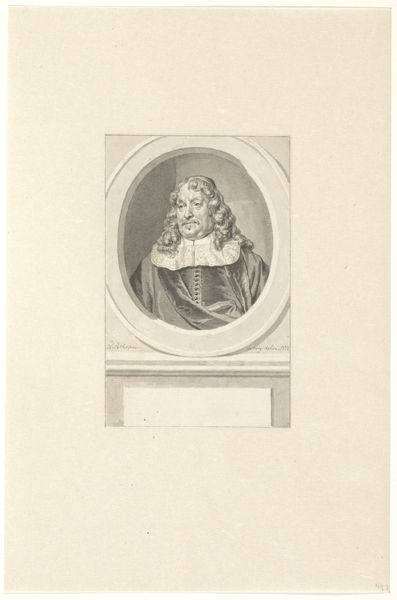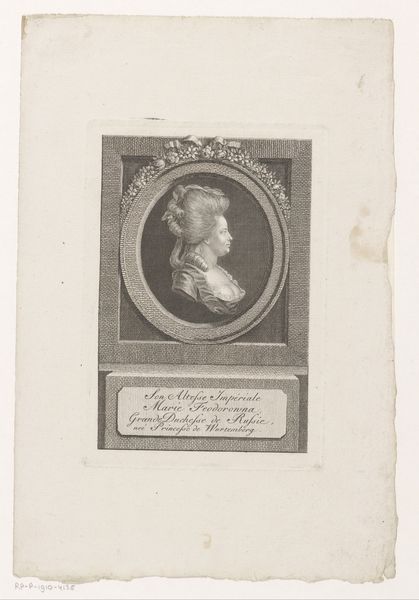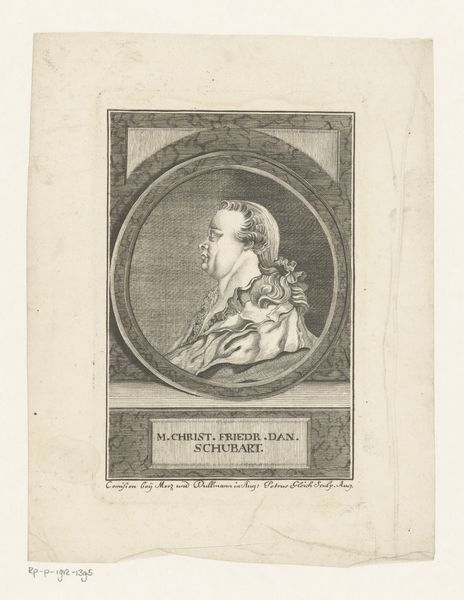
drawing, paper, ink, engraving
#
portrait
#
drawing
#
neoclacissism
#
ink paper printed
#
parchment
#
old engraving style
#
paper
#
ink
#
history-painting
#
engraving
Dimensions: height 98 mm, width 64 mm
Copyright: Rijks Museum: Open Domain
Curator: Before us is a rendering entitled "Portret van kardinaal de Richelieu", or "Portrait of Cardinal Richelieu," attributed to Charles-Paul Landon, created sometime between 1805 and 1811. The medium is ink on paper, specifically an engraving. Editor: It strikes me as rather stark. The monochrome and rigid lines emphasize the formality of the subject, even as they seem slightly detached from lived experience. Curator: Yes, the linear precision is definitely Neoclassical. Look at how the details of his clothing, specifically the armor, and even his hair are meticulously delineated, giving it almost an archeological feel. The portrait as a historical artifact, rather than a personality study, perhaps. Editor: Precisely. Richelieu, as a figure, is heavily coded—power, the church, absolutism—and this rendering leans into those established tropes. Notice how his gaze is fixed, unwavering, suggesting unwavering conviction, even control. There's almost no humanity allowed, certainly not vulnerability. The artistic treatment underscores the Cardinal's public role and persona above any individual traits. Curator: But engravings, as a medium, always add another layer, don’t they? There’s the original portrait—presumably a painting or another drawing—then the act of translation through the engraver’s burin. It becomes about reproducing, disseminating power. He's a brand as much as a man. Editor: Absolutely. The reproductive quality turns him into an almost abstract signifier of power. It reflects how leadership and authority are communicated and maintained, visually embedding this image and thus Richelieu himself within the public's cultural memory. It also invites the questions: who gets to make those images, who consumes them, and how are their values enforced or potentially resisted? Curator: So it serves as a sort of historical propaganda— a distilled, repeatable icon. A perfect case study for how images perpetuate archetypes and bolster systems of control. Editor: Exactly, an artifact for reflection on systems of power, from the past even into the present. The way an image fixes perception can be insidious, a crucial piece for understanding any subject’s complete history.
Comments
No comments
Be the first to comment and join the conversation on the ultimate creative platform.
